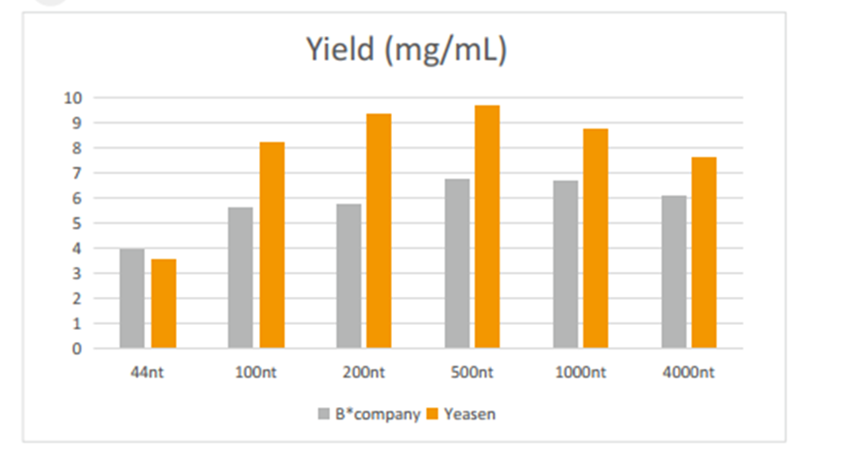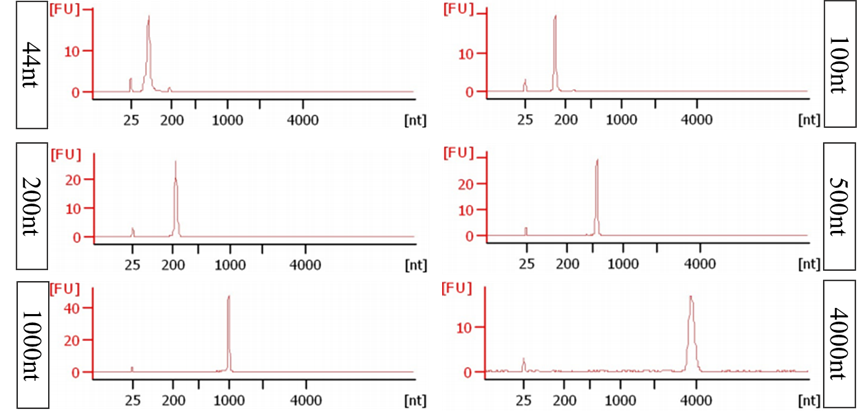T7 RNA Polymerase GMP-grade (50 U/μL)
产品介绍
本产品是大肠杆菌重组表达来源的噬菌体T7 RNA聚合酶,以含有T7启动子序列(5’-TAATACGACT CACTATAG*-3’)的双链DNA为模板,以NTP为底物,合成与启动子下游的反向单链DNA互补的RNA。双链线性平末端或5’突出末端DNA均可作为T7 RNA聚合酶的底物模板,因此线性质粒、PCR产物均可用作体外合成RNA的模板。
注:G*为RNA转录的第一个碱基
本产品按照GMP规定生产,以液体形式提供,酶活浓度为50 U/μL。
产品特色
极高的产量:1ug DNA 模板可产生100-200 µg
通用:适用于20nt-10000nt RNA的转录
高的性能:降低IVT过程中的副产物
检测无内切酶、外切酶、RNases
应用案例

图1:不同片段长度的IVT 产量
不同片段长度的DNA ,在PCR仪上37℃孵育2h,然后用磁珠(Cat#12602)纯化。产量结果用NanoDrop分光光度计测定。

图2:转录得到的不同长度RNA用毛细管电泳图检测
44-4k nt RNA经Agilent检测,结果显示,电泳条带单一;峰型明显、锐利。

图3:不同Cap analog添加量下个指标的数值;
在如下反应条件进行测试:20ul,T7(250U),NTP(10mM) ,37C 3h, LiCl沉淀;结果显示2.5mM及以上帽子添加量,综合性能相对比较好。
存储条件
-25 ~ -15℃储存,有效期1年。
COA





